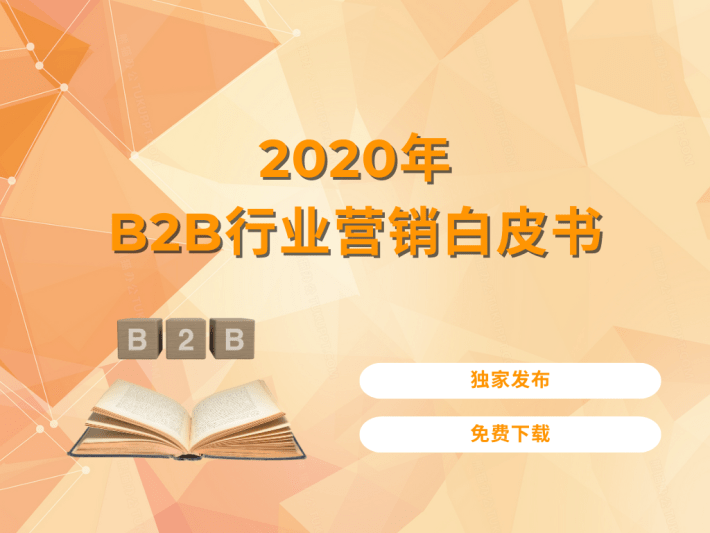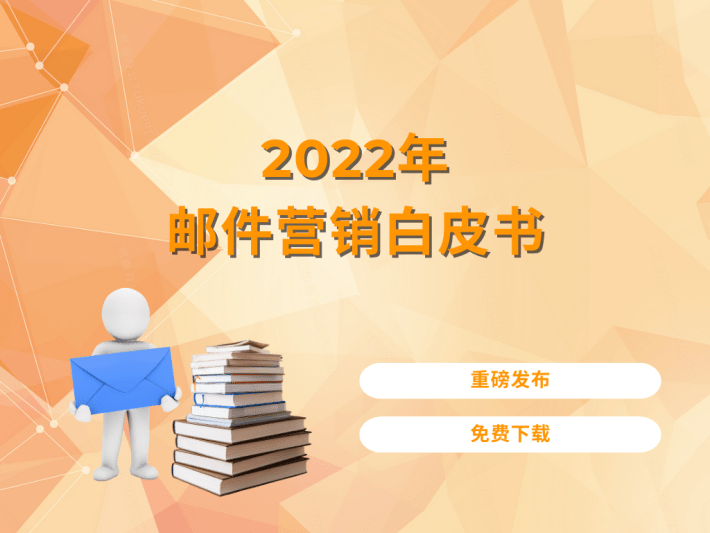Major Release: "2022 Digital Transformation White Paper" (Free Download)
Newly Released Digital Transformation White Paper:
"Decoding the Core of Marketing Growth: Is Digital Transformation an Opportunity or a Bubble?" (hereinafter referred to as the "White Paper")
Click here to download it now for free!
As the traffic dividend slows and customer acquisition costs rise, many companies are rushing into the digital transformation wave. But does embarking on digital transformation guarantee a shortcut to success? The "White Paper" highlights five key challenges, indicating that digital transformation in marketing is not so straightforward:
Firstly, some companies may oversimplify the transition of users from public domains to private domains. However, user journeys are not just linear connections between two points; they involve multiple pathways and are never single-dimensional.
Secondly, while many companies acknowledge the importance of being "customer-centric," when it comes to creating user personas, they often either oversimplify user characteristics or collect an overwhelming amount of user data. This can lead to outcomes that are merely self-gratifying.
Thirdly, many marketers obtain leads through activities, live broadcasts, and white papers, but this is just the initial step. A large number of leads accumulate in the lead pool, requiring the sales team to spend considerable time and effort contacting them individually, without knowing which step effectively activated the lead.
Fourthly, a significant amount of leads in large companies go to waste. For these companies with a high volume of leads, processing such a vast amount is extremely challenging. The complexity of channel sources makes customer persona analysis difficult, leading to increased labor costs and significantly reducing sales conversion rates.
Fifthly, the commonly mentioned marketing closed-loop refers to comprehensive, user-centric marketing, not working in isolation without external awareness. To better understand market trends and policy directions, companies need to leverage marketing to get closer to their users, moving away from working behind closed doors.
Among these challenges, user operation is an indispensable part of a company's digital transformation. Next, we will conduct a detailed analysis focusing on user operation.
01 How to Acquire New Users and Retain Existing Users?
Last year, many companies' digital marketing goals were related to leads, such as improving lead quality and driving sales and growth through leads. This indirectly reflects that, whether small and medium enterprises or large corporations, all face the challenge of finding customers.
To address this issue, the "White Paper" suggests that content marketing might be a crucial tool for uncovering leads. Data shows that 90% of B2B buyers search online for relevant brands, products, or features before their first contact with a sales representative. So, how can companies create brand differentiation through content marketing?
The "White Paper" proposes a solution: to attract the target audience, begin by analyzing and creating content using the 5W1H technique, similar to journalism— ``
Who: What companies are they? Which industry are they in? Who are the key decision-makers for the project? Who are the target users?
Where: Which tier of the industry are they currently in? Where can you find news or reports about them? What positioning do they hope to achieve in the future?
What: What is the profile of their target users? What pain points do they hope to address through the platform? What are their requirements for service providers?
When: What stage of digital transformation are they currently in? What are the key milestones, and what can we achieve based on these milestones?
Why: Why should they choose us? What are our strengths and weaknesses? How can we expand our strengths?
How: How do they complete the marketing closed-loop from acquiring new customers to customer acquisition and sales conversion?

Once these 5W1H questions are clearly understood, companies can tailor and distribute different content on different platforms and scenarios according to the varying habits of users across channels. This approach enhances the alignment between content and platform, increasing the chances of "going viral."
While many companies are exhausting all efforts to acquire leads, a significant amount of leads in large companies are going to waste. Research reports indicate that before making a final purchase, customers have over 12 direct and indirect interactions with the company. The process of user interaction with the company can be summarized as: platform engagement — lead submission — customer conversion. Each interaction in this process deserves special attention from the company.
Statistics show that companies proficient in lead nurturing can reduce costs by 33%, yet 73% of leads are abandoned before being nurtured.
The "White Paper" indicates that by using a scoring system to understand existing user preferences and planning a clear marketing journey, companies can leverage personalized content and multi-channel automated outreach to engage users. Through iterative optimization of touchpoints, companies can enhance sales efficiency and focus, transforming leads from potential leads to marketing-qualified leads, and eventually to sales-qualified leads.
In the market, both B2C brand owners and B2B companies are highly focused on acquiring more new users while maintaining existing ones. Next, Morketing will conduct a detailed analysis centered on these two types of businesses.
02 B2C Case: Chando Achieves 30 Million+ New Orders
Founded in 2001, the Chinese beauty brand Chando recruited over 920,000 new fans and gained more than 560,000 new registered members through data processing and user operations, resulting in over 30 million new orders. This approach is worth emulating by other brands.
After more than twenty years of rapid development, Chando has accumulated a vast membership database, with members coming from various channels. By integrating and centralizing these fragmented member data online, re-analyzing and uncovering member value, and leveraging it effectively, Chando can better understand user needs, enhance user experience, and bring immeasurable benefits to the brand.
Therefore, the first thing Webpower did for Chando was to build a unified intelligent user data platform, serving as the "heart", to aggregate data from various channels. This platform bridges the online and offline data barrier, centralizing everything in the "heart" for data cleaning, integration, and management. It also performs deep analysis on data from all channels to acquire user tags and personas.

With the effective data supply from the "heart," Webpower used diversified data dashboards as the "brain" for Chando, helping to further make recommendations and predict outcomes for users, products, social channels, and sales channels:
Firstly, perform AI deep learning and prediction of user behaviors;
Secondly, recommend product preference combinations and promotional activities, and predict the outcomes of marketing campaigns;
Thirdly, provide recommendations on advertising allocation ratios for social channels and predict the results, as well as suggest smart channel strategies for attracting traffic;
Fourthly, provide cross-traffic guidance between sales channels and offer optimization recommendations for stores.
Once the "brain" generates various insights, how does Chando "converse" with consumers?
Each Chando product comes with a QR code, and Chando invites consumers to scan the code to enable the product to interact with them, encouraging consumers to become members. After collecting consumer information, it becomes easier to refine user tags and personas. To make the tag dimensions more accurate, Chando has established multi-dimensional tags for members, such as acquisition channels, preferred products, and circle affiliations.
After establishing the membership tagging system, Chando focuses on two key operational scenarios: first, for existing members, personalized vouchers such as sample claim coupons and new member gifts are issued based on tag attributes to precisely reach target members; second, besides online strategies, Webpower has helped Chando establish a unified user communication mechanism offline, where every sales associate has their own unique QR code, enabling them to efficiently recruit new members and maintain existing ones using in-store resources.
03 B2B Case: Trade Show Companies Connecting Key Attributes to Acquire Potential Customer Data
If B2C brand owners focus on consumer needs from the production and R&D stages, B2B companies manage the lifecycle of their users starting from potential customers. These potential customers primarily come from four main channels: advertising channels, official websites, social media, and offline trade shows.
When users see advertisements, they might click on the ads, navigate to the official website, or call the company's phone number; when browsing the official website, they may click on the company's products, services, or banners, and some may even register and log in; through social media channels like WeChat, there will be users' WeChat profile pictures, nicknames, Open IDs, etc.; when attending offline trade shows, users need to enter the exhibition via SMS or QR codes. Throughout this series of interactions, users inadvertently leave relatively authentic personal information with the company.
However, the user attribute data and behavior data that companies can obtain vary across different channels. If a user engages with the brand through multiple channels, the data becomes even more complex. Therefore, besides acquiring customers, it is more crucial for companies to integrate and unify the data collected from different channels. Only through comprehensive data integration can the true value of the data be realized.

Using a trade show company as a case study to further illustrate, when a potential customer scans the trade show QR code and authorizes access to the company's mini-program, the company can obtain their WeChat Open ID. By guiding the potential customer to fill out forms or sending them important reports, the company can quickly and automatically collect data from all marketing channels, facilitating the tracking of a series of user behavior data for the trade show company.
Subsequently, Webpower uses a lead scoring system to accurately depict user personas, identify the stage of the user's lifecycle, and automatically nurture high-scoring leads. This system continuously updates the potential value assessment results of users in real-time, helping the trade show company identify high-quality users among the potential leads. Mature leads are then automatically allocated to sales, thus improving sales efficiency.
Most importantly, to better break down channel barriers and aggregate data from all channels, Webpower's solution is to establish an SCRM (Social Customer Relationship Management) data center. This often involves multiple departments within the company, and the integration and synchronization of a large amount of data can increase communication costs. Therefore, it is essential to use technologies such as marketing automation to integrate channel data while selecting the most valuable marketing channels. ``
The integration of multi-channel data allows companies to conduct future marketing campaigns more effectively, formulating targeted marketing strategies at a more reasonable cost.
04 Conclusion
In summary, whether it's B2C brand owners or B2B companies, as illustrated in the two cases above, there is no one-size-fits-all model that can be directly applied. We hope that this white paper will help companies understand that different starting points result in differing paths for digital transformation. By identifying the right entry points and leveraging marketing automation technologies, companies can gradually establish a sustainable development model from point to surface.
Scan the QR code now to download Get a sneak peek at the exciting content





Scan the QR code below to download the Digital Transformation White Paper for free

Kind Reminder: File size is 3.5MB
We are Webpower
An attitude-driven digital marketing company
Webpower Rights Statement
Webpower China Region All Rights Reserved. Reproduction must include the source.


